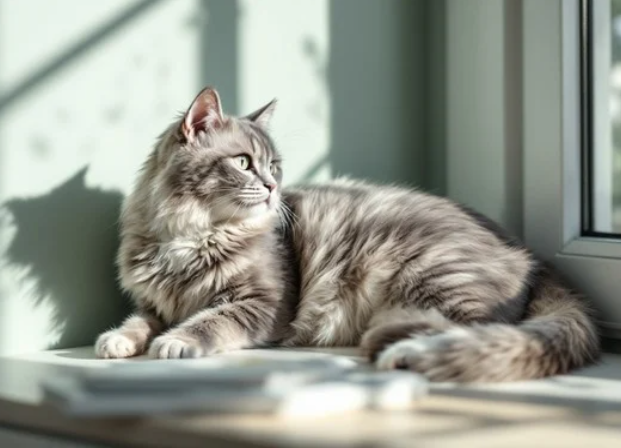Why Does My Cate Bite Me? Understanding why cats bite. Cats are beloved for their independence, mysterious behavior, and affection. However, one behavior that often puzzles and frustrates cat owners is biting. Whether it’s a gentle nip during petting or a sudden, sharp bite seemingly out of nowhere, understanding why cats bite people is key to building a better relationship with your feline companion. Cat bites can stem from a variety of causes, ranging from fear and stress to overstimulation and medical issues. By recognizing the reasons behind this behavior, cat owners can respond appropriately, ensuring both safety and emotional well-being for their pets and themselves.
1. Overstimulation During Petting
One of the most common reasons a cat may bite is petting-induced overstimulation. While many cats enjoy affection, they also have boundaries. Some cats have a lower tolerance for touch and may become overstimulated if petting continues for too long or in sensitive areas like the belly or base of the tail. What may start as a purring, kneading session can quickly escalate to a bite if the cat feels overwhelmed.
 Cats communicate overstimulation through subtle cues such as flicking their tail, flattening their ears, or twitching their skin. If these warning signs are ignored, a bite may follow. Paying close attention to body language can help avoid crossing your cat’s comfort threshold.
Cats communicate overstimulation through subtle cues such as flicking their tail, flattening their ears, or twitching their skin. If these warning signs are ignored, a bite may follow. Paying close attention to body language can help avoid crossing your cat’s comfort threshold.
2. Fear and Defensive Behavior
Cats are naturally cautious animals, and fear is a powerful trigger for defensive biting. If a cat feels threatened, whether by sudden movements, loud noises, or unfamiliar people or animals, it may resort to biting to protect itself. This is especially true in cats that have experienced trauma, were not properly socialized, or are dealing with changes in their environment.
Fear-based bites often happen quickly and may be accompanied by hissing, swatting, or an attempt to flee. In such situations, giving the cat space and creating a calm environment is essential. Punishing a frightened cat can escalate the fear, making the behavior worse over time.
3. Play Aggression
Play is an important part of a cat’s development, especially in kittens. Young cats often engage in mock hunting behavior : stalking, pouncing, and biting. Without proper training, some cats carry these habits into adulthood, especially if they were encouraged to play with hands or fingers as kittens.
Play aggression can be redirected by using interactive toys like feather wands or laser pointers instead of hands. Regular play sessions help cats release pent-up energy in a healthy, non-aggressive way. Consistency in boundaries and encouraging appropriate play is vital in preventing this type of biting.
4. Redirected Aggression
Redirected aggression occurs when a cat is agitated by something it cannot reach or control, such as another cat outside the window or a loud noise. In its heightened state, the cat may lash out at the nearest person or animal, biting as a way to release tension.
This form of aggression is often sudden and seemingly unprovoked. Owners can reduce redirected aggression by limiting a cat’s exposure to stressors and providing safe spaces where the cat can calm down. Identifying the external trigger can help address the root of the behavior.
5. Medical Issues and Pain
Cats in pain or discomfort may bite to protect themselves, especially if touched in a sore area. Conditions such as arthritis, dental disease, or infections can make even gentle contact painful. Because cats are skilled at hiding signs of illness, a bite may be the first sign that something is wrong.
 If a cat suddenly starts biting without a clear behavioral cause, it’s important to consult a veterinarian. A thorough medical evaluation can rule out or address any physical health issues contributing to the behavior.
If a cat suddenly starts biting without a clear behavioral cause, it’s important to consult a veterinarian. A thorough medical evaluation can rule out or address any physical health issues contributing to the behavior.
6. Territorial Behavior
Cats are territorial animals and may bite to assert dominance or protect what they consider their territory. This is more common in multi-cat households or when new animals or people enter the home. Biting can be part of establishing hierarchy or enforcing personal space.
Gradual introductions between pets, providing enough resources (food bowls, litter boxes, resting places), and respecting a cat’s need for territory can prevent territorial aggression. In some cases, a feline behaviorist can offer strategies for harmonizing the household.
7. Lack of Socialization
Kittens who are not socialized with humans between the ages of 2 to 9 weeks may grow up to be fearful or mistrustful of people. These cats might bite when approached or touched, as they have not learned to associate human interaction with safety and comfort.
Adopting positive reinforcement training techniques and creating a predictable routine can slowly build trust. Time, patience, and gentle interactions are key when working with poorly socialized cats.
8. Communication and Control
Some cats bite as a form of communication. If your cat wants to be left alone or wants something, like food or attention, it may use a bite to make its point. In these cases, the bite may not be aggressive but rather a way of asserting control over the situation.
By observing when and why your cat bites, you can start to understand what it is trying to communicate. Meeting your cat’s needs preemptively and offering alternative ways to communicate, such as clicker training, can help reduce biting incidents.

Did you find this article useful? Would you like 100% free access to more articles like these, and free access to over 5,000 vetted pet care service professionals throughout the United States? Sign up here for a free Petworks account, and take 10% off your first booking, on us!
How to Prevent and Respond to Cat Biting
When a cat bites, it’s important to stay calm. Reacting with anger or punishment can worsen the behavior and damage your bond. Instead, try these steps:
-
Respect boundaries: Stop petting or handling your cat if it shows signs of discomfort.
-
Use toys for play: Keep hands and feet out of play to avoid encouraging biting habits.
-
Create a stress-free home: Reduce exposure to triggers and provide hiding spots or high perches.
-
Regular vet checkups: Rule out or treat any underlying medical problems.
-
Behavioral help: Consult a feline behaviorist if biting persists or escalates.
With patience and understanding, most biting behavior can be improved or resolved over time.
The Bottom Line on Cat Biting
Cat biting is a form of communication that can stem from various emotional or physical needs. Whether it’s overstimulation, fear, pain, or frustration, each bite has a reason. By observing your cat’s body language, creating a safe and enriched environment, and addressing health or behavioral concerns, you can reduce biting and foster a more trusting relationship with your feline companion.
Understanding your cat’s unique personality and needs is the first step toward harmony. When in doubt, seeking professional advice from a veterinarian or animal behaviorist can help you decode the message behind the bite and guide you toward a peaceful solution.
 In 2021, Dr. Marty Goldstein DVM joined the pet care platform Petworks as an advisor in its Animal Nutrition care division. Dr Marty Nature’s Blend is on a mission to help your pets live their healthiest lives possible. Dr. Marty’s pet nutrition expertise and guidance has helped Petworks evolve and become the preeminent animal and pet nutrition consultation service for pet parents in North America.
In 2021, Dr. Marty Goldstein DVM joined the pet care platform Petworks as an advisor in its Animal Nutrition care division. Dr Marty Nature’s Blend is on a mission to help your pets live their healthiest lives possible. Dr. Marty’s pet nutrition expertise and guidance has helped Petworks evolve and become the preeminent animal and pet nutrition consultation service for pet parents in North America.
 In 2022, Blue Buffalo Founder Bill Bishop Jr. joined Petworks as Senior Advisor in our Animal Nutrition Care Division. Bill brings his extensive expertise in pet food innovation and business leadership. His guidance helps Petworks enhance our pet nutrition service offerings, helping to ensure that pet parents throughout the world receive trusted, science-backed nutritional support for their dogs, cats, and animals.
In 2022, Blue Buffalo Founder Bill Bishop Jr. joined Petworks as Senior Advisor in our Animal Nutrition Care Division. Bill brings his extensive expertise in pet food innovation and business leadership. His guidance helps Petworks enhance our pet nutrition service offerings, helping to ensure that pet parents throughout the world receive trusted, science-backed nutritional support for their dogs, cats, and animals.
About The Author
 Petworks Co-Founder Kevin Kinyon is a life-long animal lover who works tirelessly to improve the lives of pets and their parents. Human and animal qualities he values most are integrity, humor, and empathy.
Petworks Co-Founder Kevin Kinyon is a life-long animal lover who works tirelessly to improve the lives of pets and their parents. Human and animal qualities he values most are integrity, humor, and empathy.


